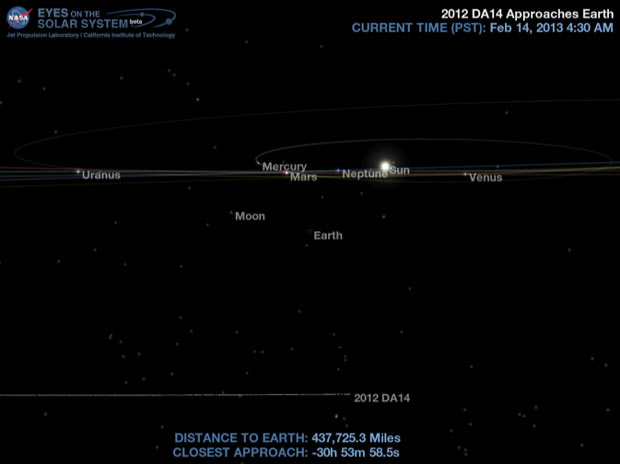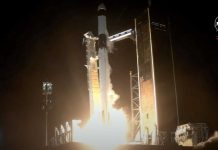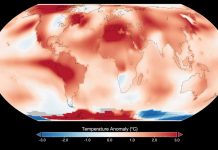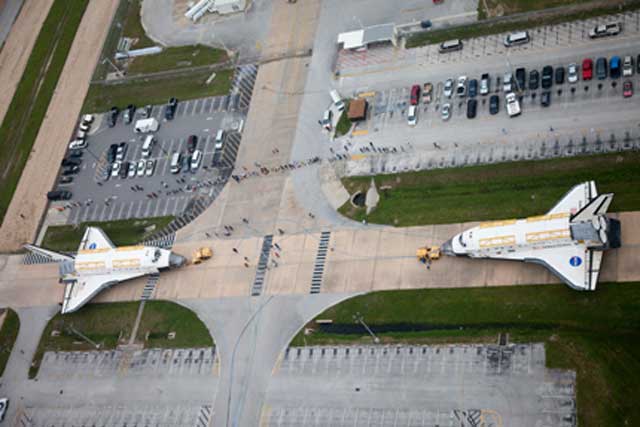
PASADENA, Calif. – NASA DA14 Asteroid Coverage, asteroid DA14 will glide by Earth on Friday. DA14 will, in its closest approach to Earth will be 27,600 kilometers or 17,150 miles from our planet’s surface.
The NASA DA14 asteroid coverage on NASA Television will provide commentary starting at 2PM EST on Friday, Feb. 15th.
NASA DA14 Asteroid Coverage
During the close, but safe, flyby of the small near-Earth asteroid the space agency will keep a close eye on the incident. NASA places a high priority on tracking asteroids and protecting Earth. This flyby will provide a unique opportunity for researchers to study a near-Earth object up close.
The half-hour broadcast from NASA’s Jet Propulsion Laboratory (JPL) in Pasadena, Calif., will incorporate real-time animation to show the location of the asteroid in relation to Earth, along with live or near real-time views of the asteroid from observatories in Australia, weather permitting.
In addition to the commentary, near real-time imagery of the asteroid’s flyby before and after closest approach, made available to NASA by astronomers in Australia and Europe, weather permitting, will be streamed beginning at about noon EST (9 a.m. PST) and continuing through the afternoon at the following website:
A Ustream feed of the flyby from a telescope at NASA’s Marshall Space Flight Center in Huntsville, Ala., will be streamed for three hours starting at 9PM EST.
The NASA Near Earth Objects (NEO) Program at the agency’s headquarters in Washington, manages and funds the search, study, and monitoring of NEOs, or asteroids and comets, whose orbits periodically bring them close to the Earth. NASA’s study of NEOs provides important clues to understanding the origin of our solar system. The objects also are a repository of natural resources and could become waystations for future exploration. In collaboration with other external organizations, one of the program’s key goals is to search and hopefully mitigate potential NEO impacts on Earth. JPL conducts the NEO program’s technical and scientific activities.






